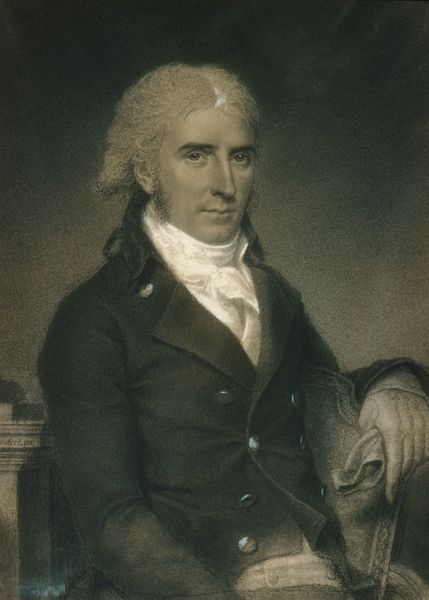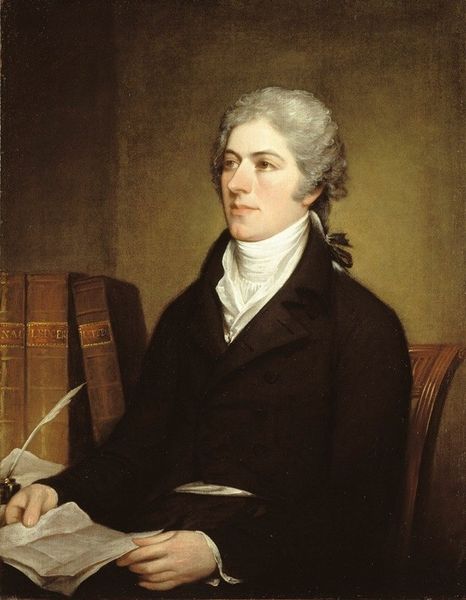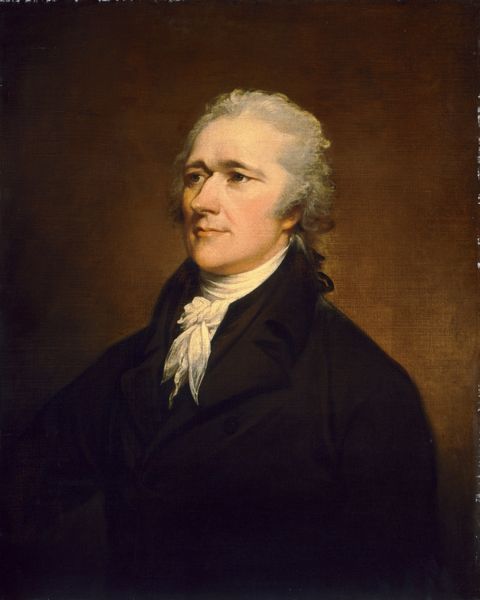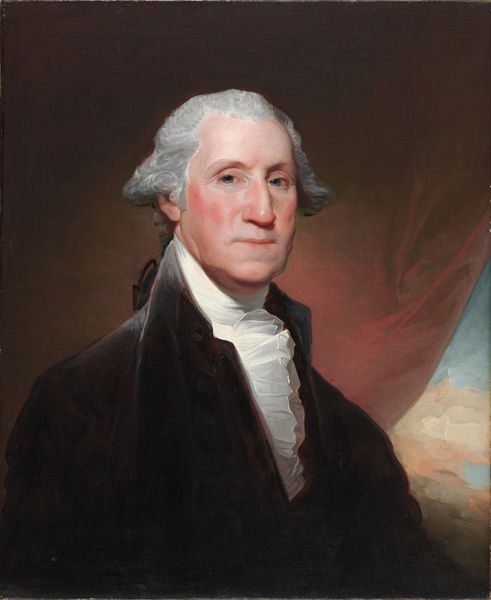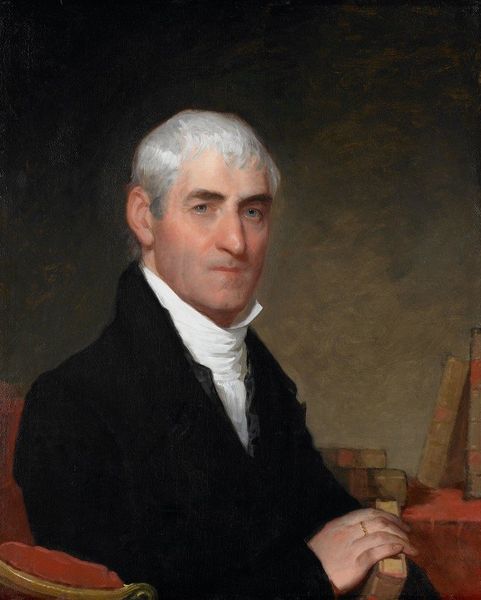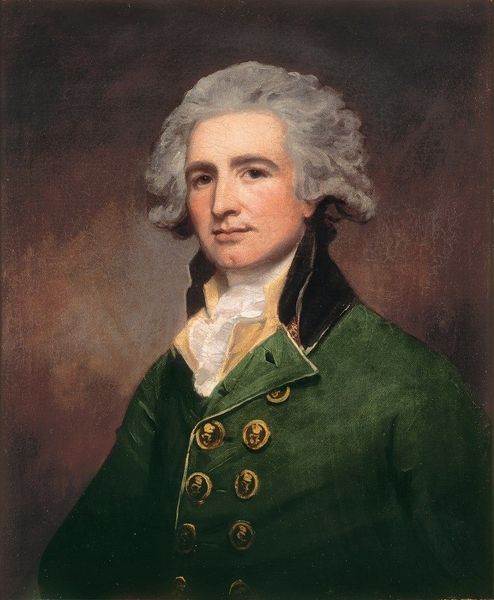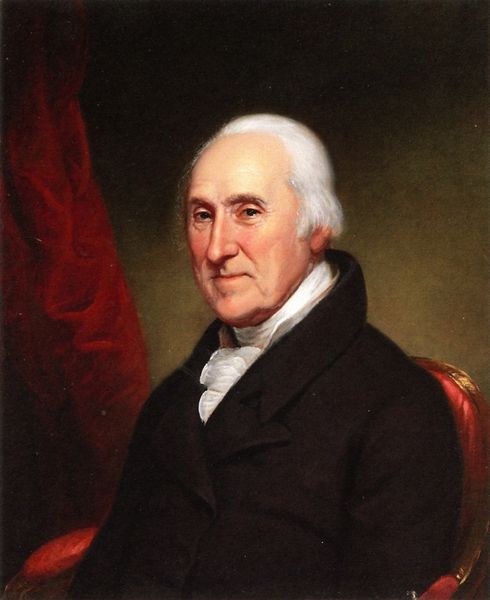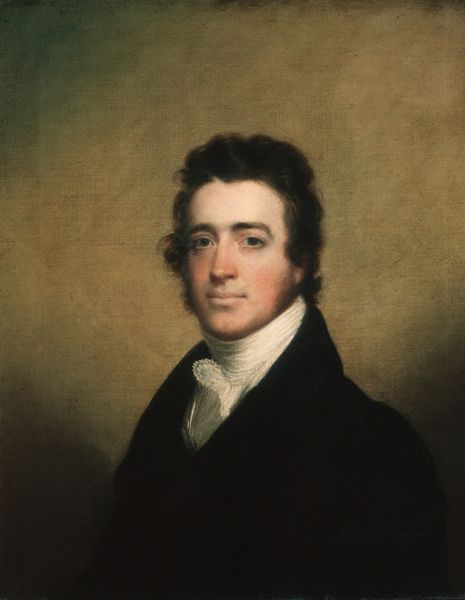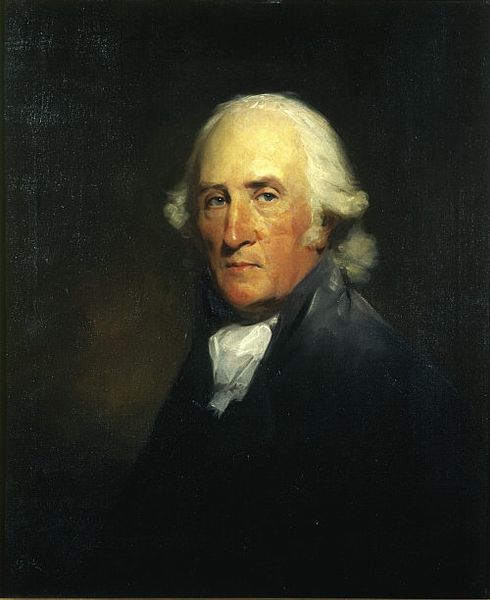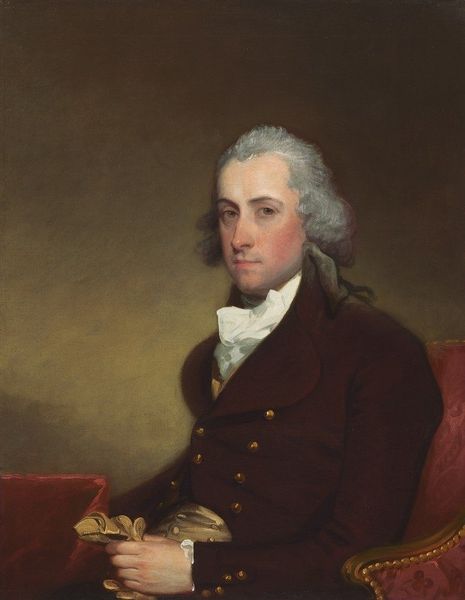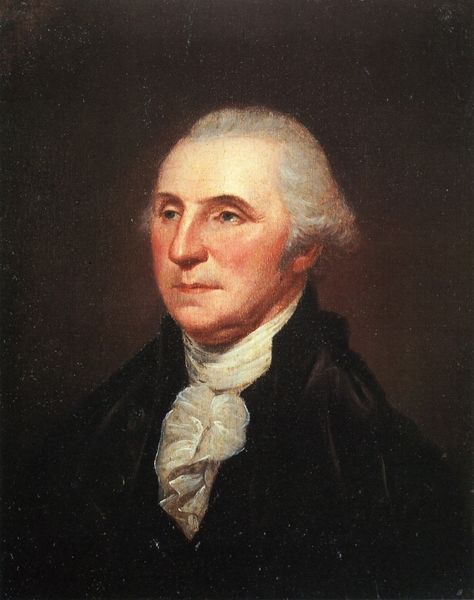
painting, oil-paint
#
portrait
#
neoclacissism
#
portrait
#
painting
#
oil-paint
#
academic-art
#
realism
Copyright: Public domain
Editor: This is "Charles Pettit," a portrait painted in 1792 by Charles Willson Peale. Painted with oil on canvas, it depicts a distinguished gentleman. The color palette is really muted, very earthy. The man appears intelligent, but perhaps a bit… distant? What's your read on this portrait? Curator: Distant, perhaps lost in thought? I see a man caught between two worlds. The neoclassical setting, with its nod to reason and order, and the faintest hint of impending revolution rustling just beneath the surface of that composed gaze. Look at the set of his jaw, the way his hand is posed. Editor: Almost guarded, maybe? Is it the book he's holding? It looks more like a prop than something he’s actually reading. Curator: Exactly! It's less about active engagement and more about *portraying* himself in a certain light. That tightly clasped book, along with the quill, acts like emblems, signalling intellectual pursuits and civic virtue. This was very popular during the Neoclassical era when people wanted to make strong social statements. But you’re right; it does feel a little staged. And perhaps that is why there is a lack of genuineness in this painting. A great concept; what does this make you wonder about his life? Editor: That makes sense. I’m curious about the *real* Charles Pettit. I wonder what he was actually thinking about? The weight of leadership, or maybe just what he'd have for dinner. Curator: Precisely! It’s in those unanswered questions that art truly thrives, don't you think? We glimpse the performance and begin searching for the person underneath. Editor: Definitely! It’s like the artist gave us permission to question the image itself. It makes it way more interesting to me. Curator: Absolutely! This portrait isn't just a likeness; it is an invitation. And like all good invitations, it prompts further conversation.
Comments
No comments
Be the first to comment and join the conversation on the ultimate creative platform.
